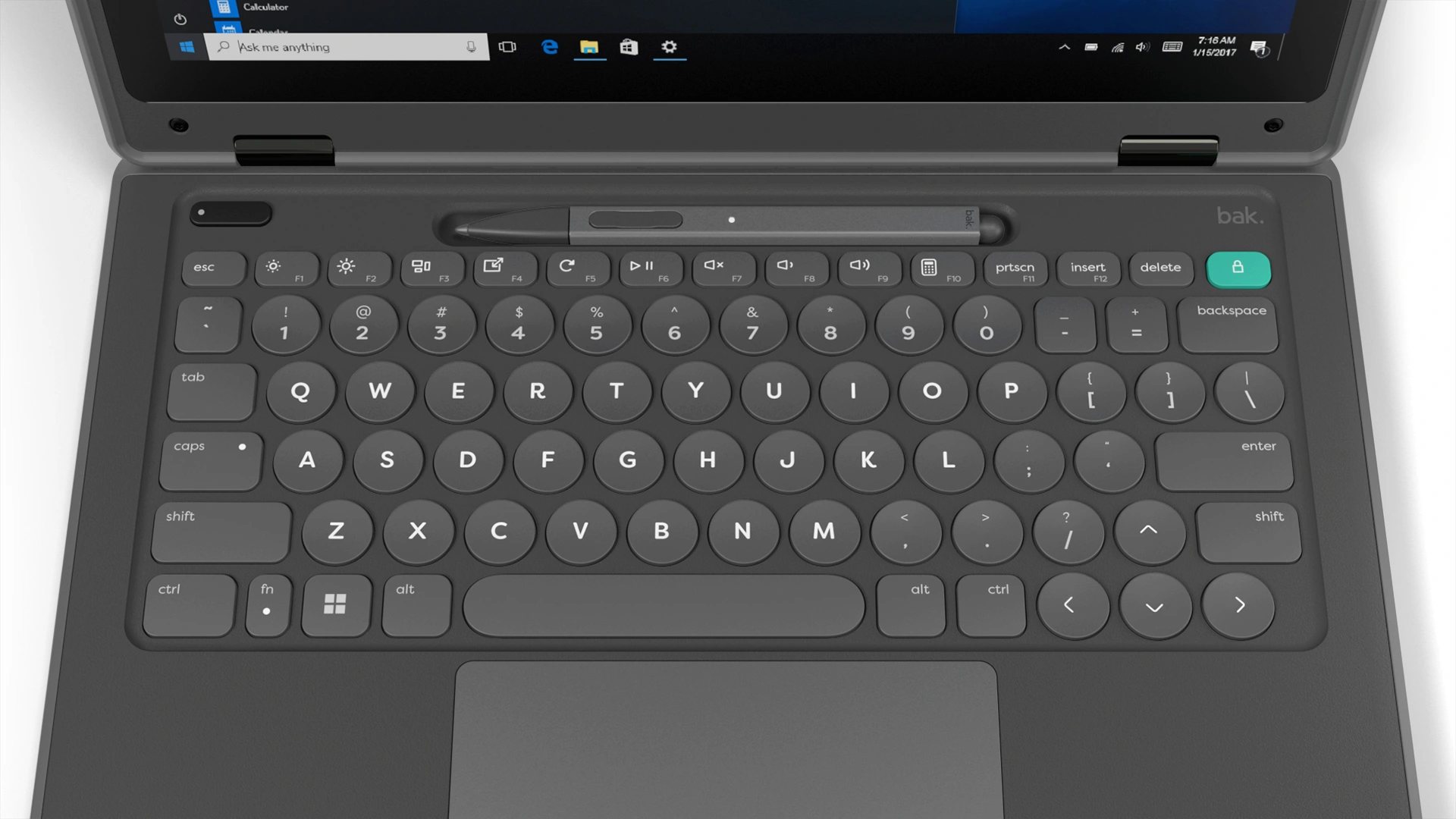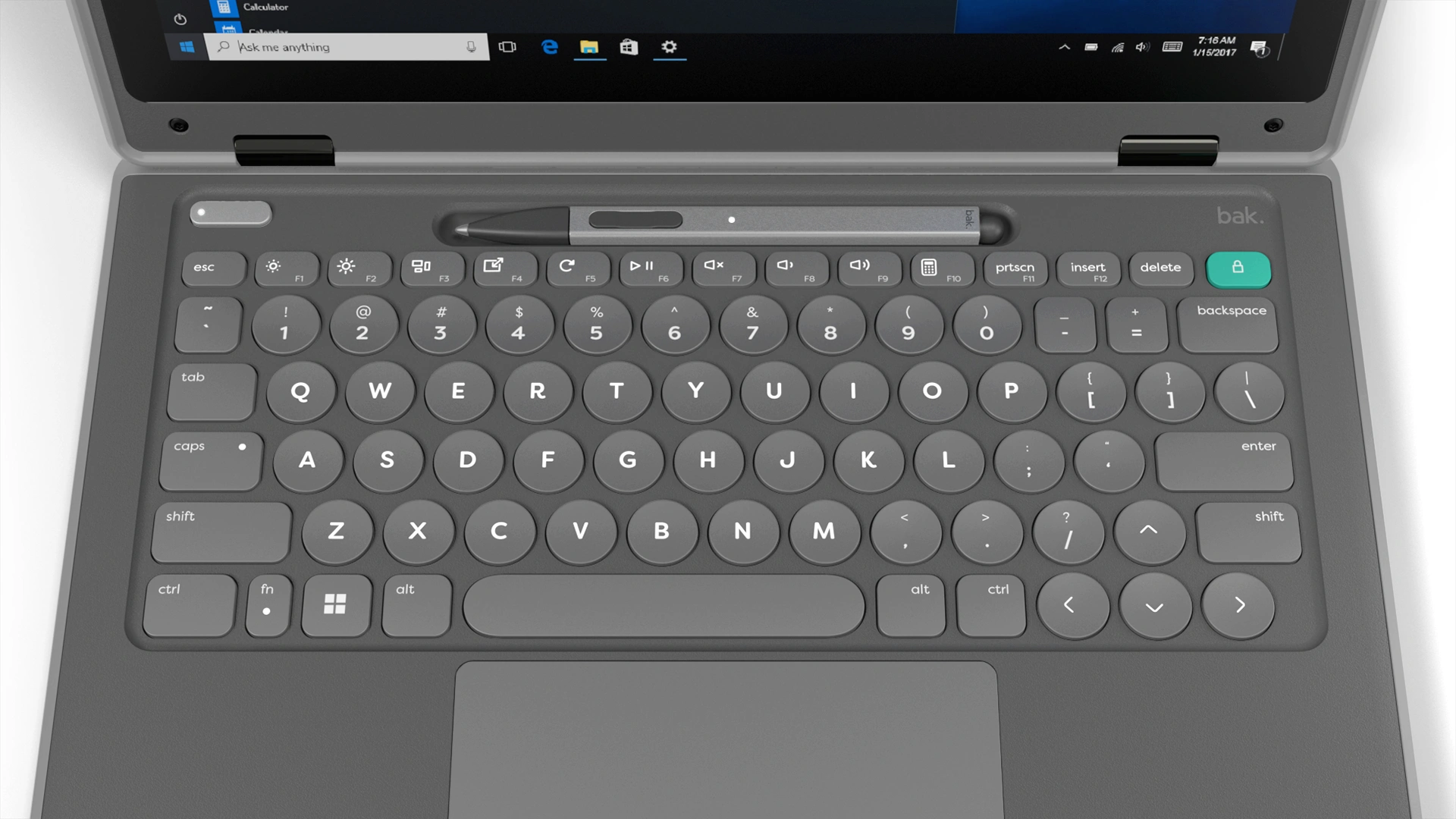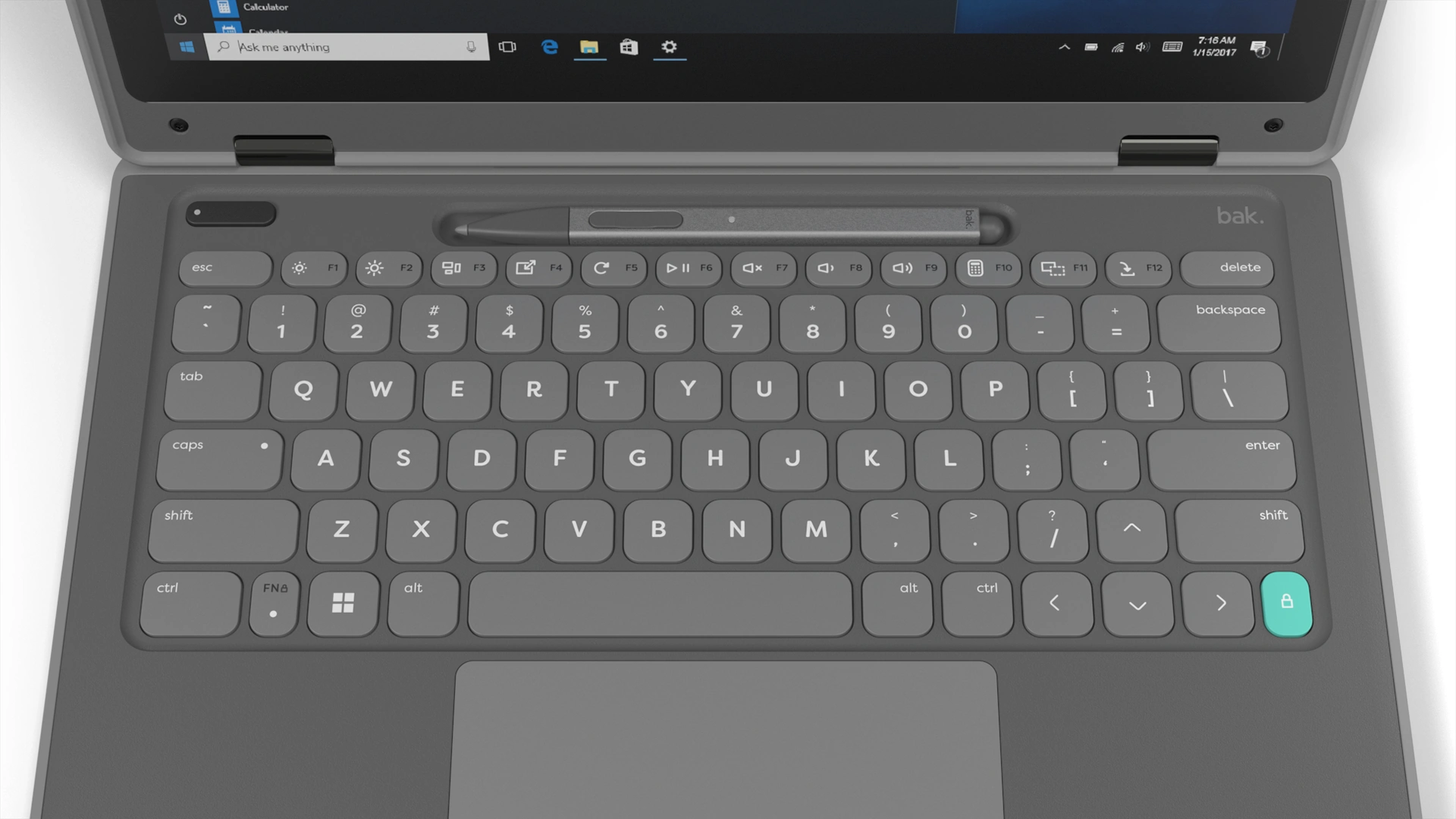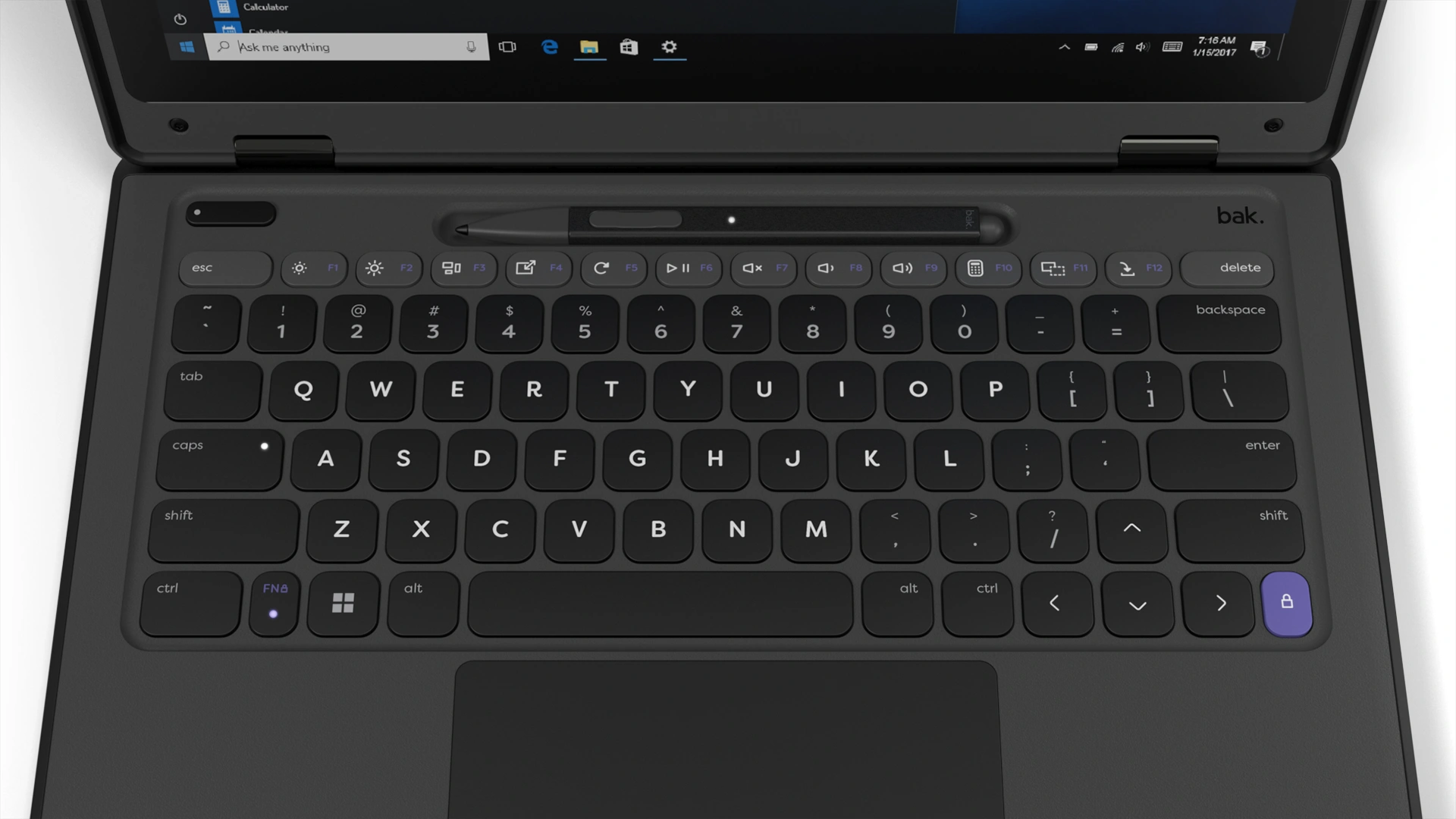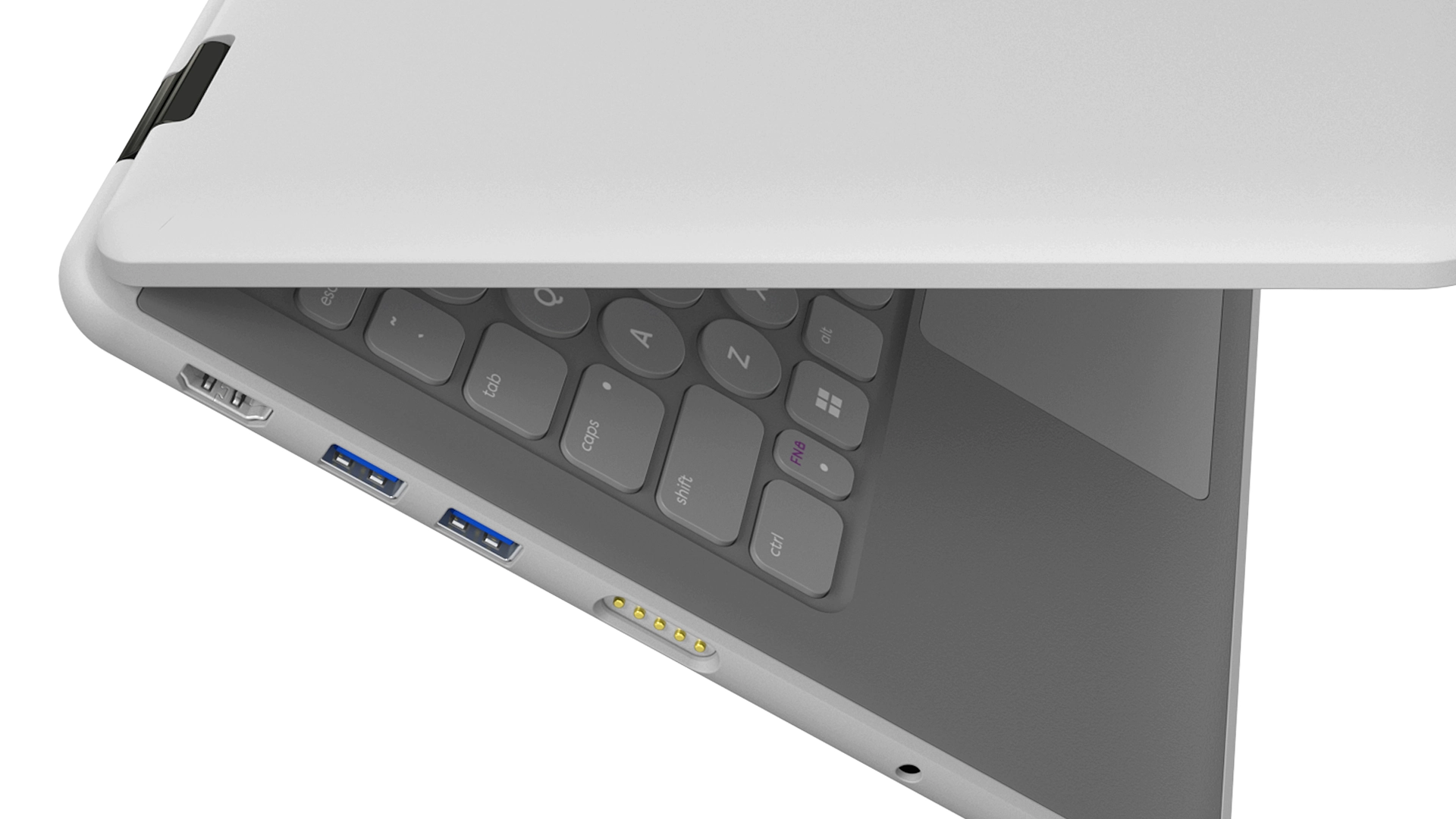
Bak USA wanted to re-envision what a purpose-built laptop for education could be.
We had plenty of data from our customer experience and production departments. All of this was channeled into a design sprint that ignited a rapid two month design process.
There is an entire story about this design sprint. But that’s for a future blog post! Instead, I will walk you through a few of the design issues we tackled. First off, everyone loved the 180˚ degree rotating camera. Since many students and teachers covered it with tape when not in use, we included a sliding plastic cover. The grooves on the surrounding plate say “slide me” to communicate this feature.
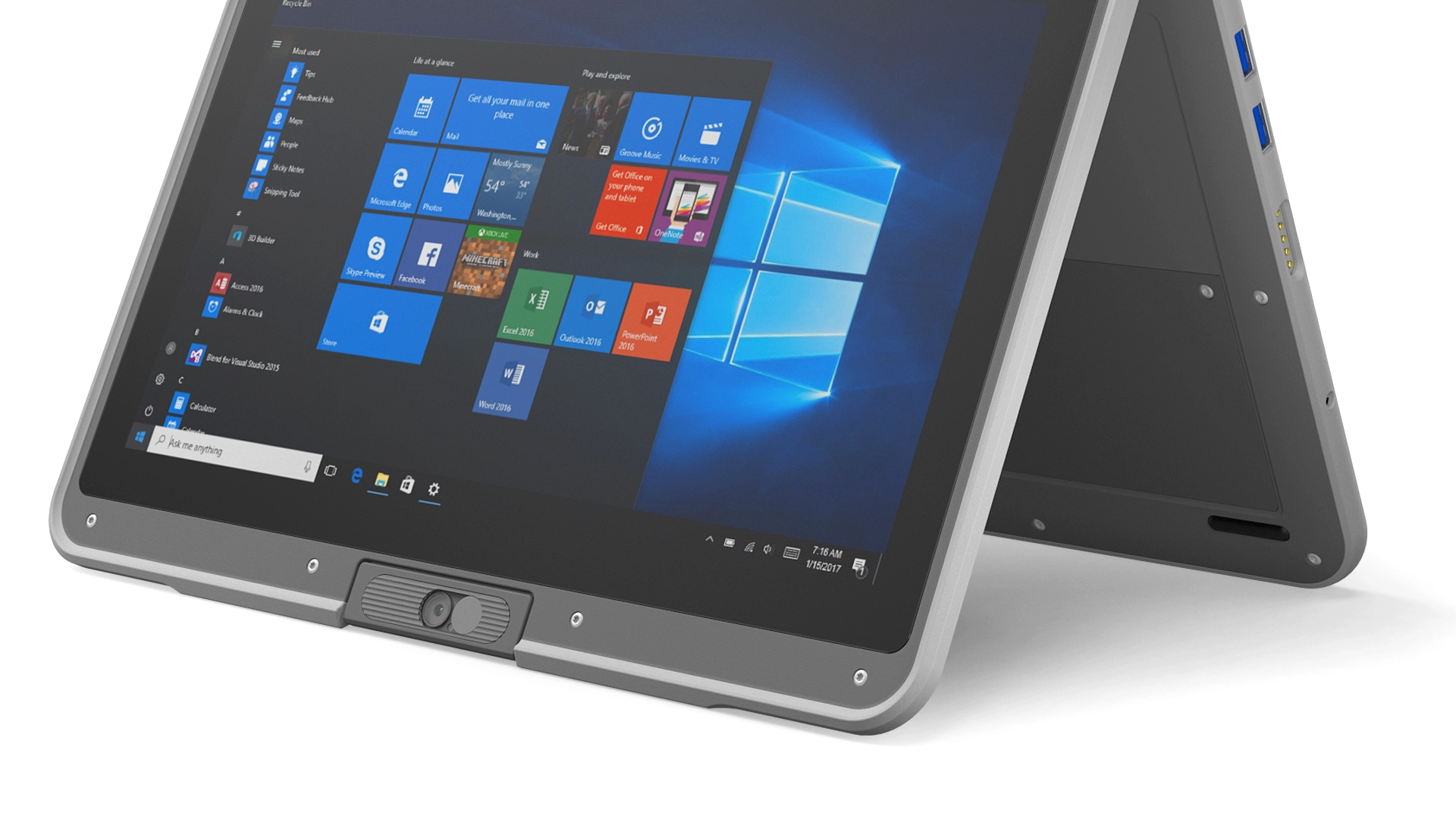
Our current model had stickers or rubber feet covering the screws. This caused a lot of extra work for assembly and RMA (Return Merchandise Authorized). Since we assembled devices stateside, exposing these screws became a key DFM (Design for Manufacturing) rule. I wanted it to look purposeful and attractive. It’s really appreciated when you turn a device over and even the bottom is attractive.
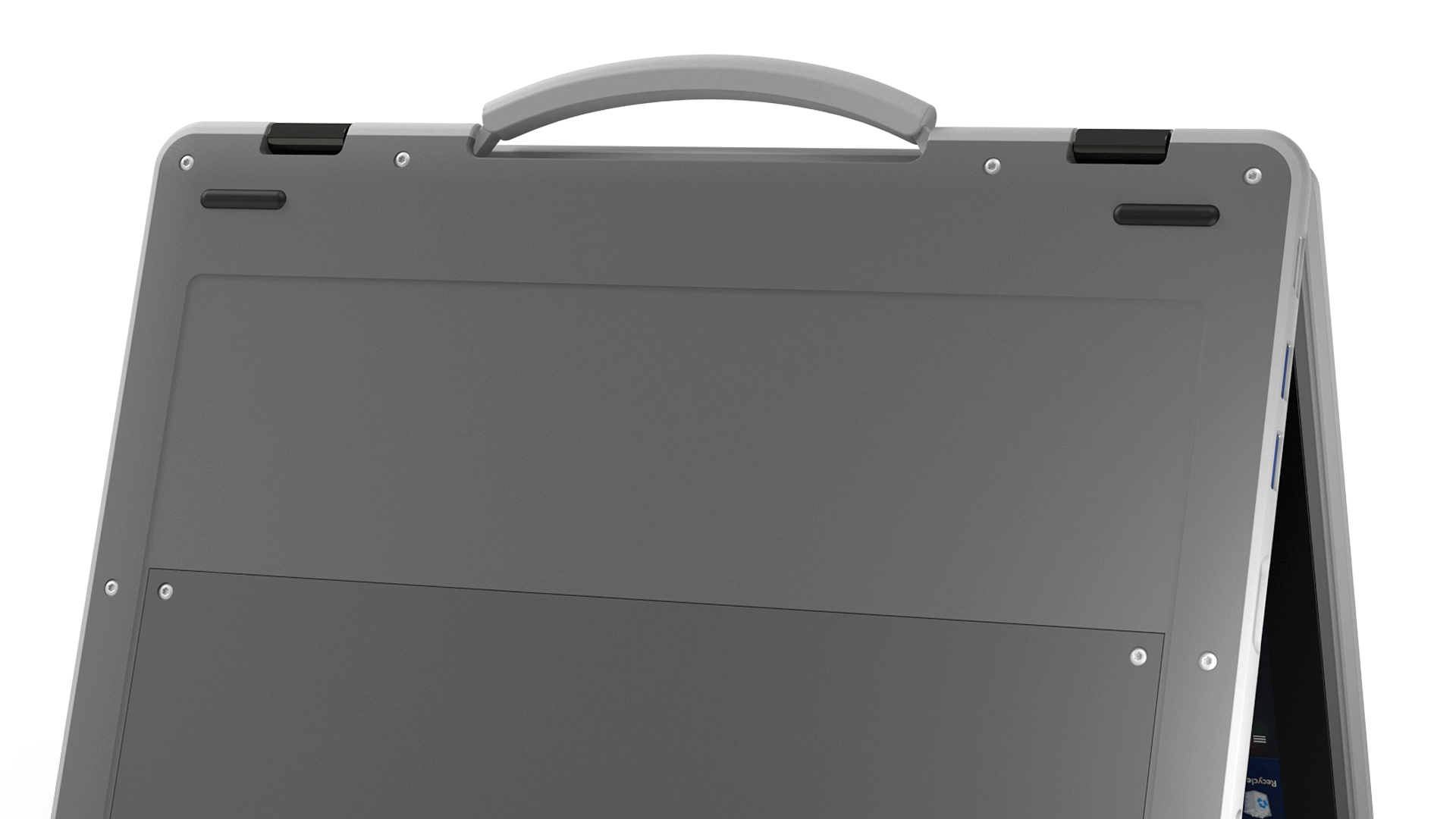
Unfortunately, our stylus drained pretty quickly. We ditched using two AAAA batteries in favor of a permanent battery. Where to store the stylus was always an issue. In the current model, the stylus was tethered to the device and stored in a fabric loop. This was less than ideal. In some cases, students carried their laptop by holding the stylus! Additionally one of the most common device repairs was when a student closed the laptop on their stylus, shattering the LCD screen. To address these various issues, we carved out a well above the keyboard. This well doubled as storage and charging so the stylus would charge whenever students weren’t using it.
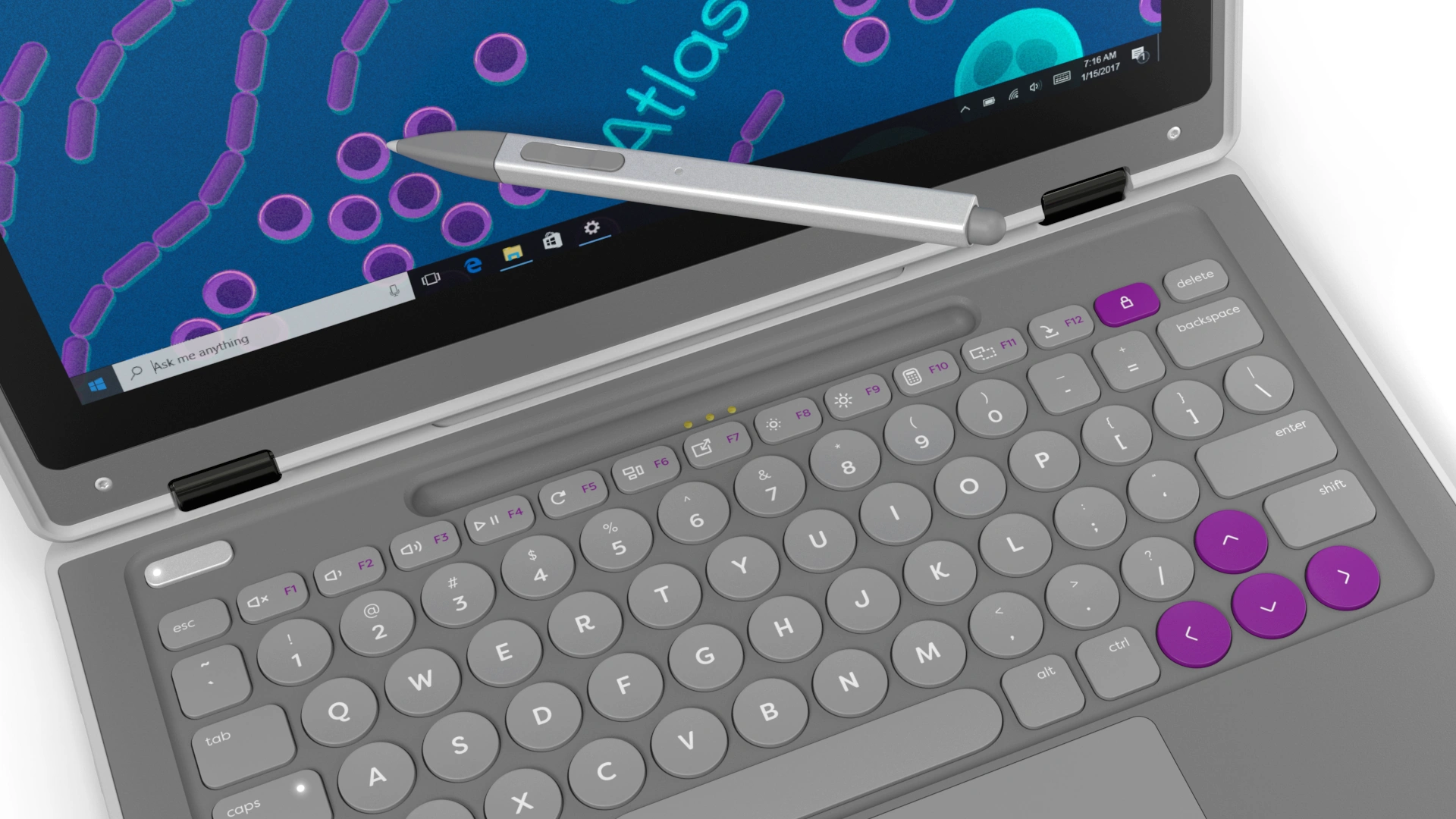
We were also considering a high spec version of the laptop for the professional market. For this version, we upgraded the stylus with a clip and more premium materials. Below you can see the difference between the two stylus models. Instead of a perfectly cylindrical stylus, we made the top surface flat. This prevents the stylus from rolling off the table and ensures that it racks properly into the storage well.
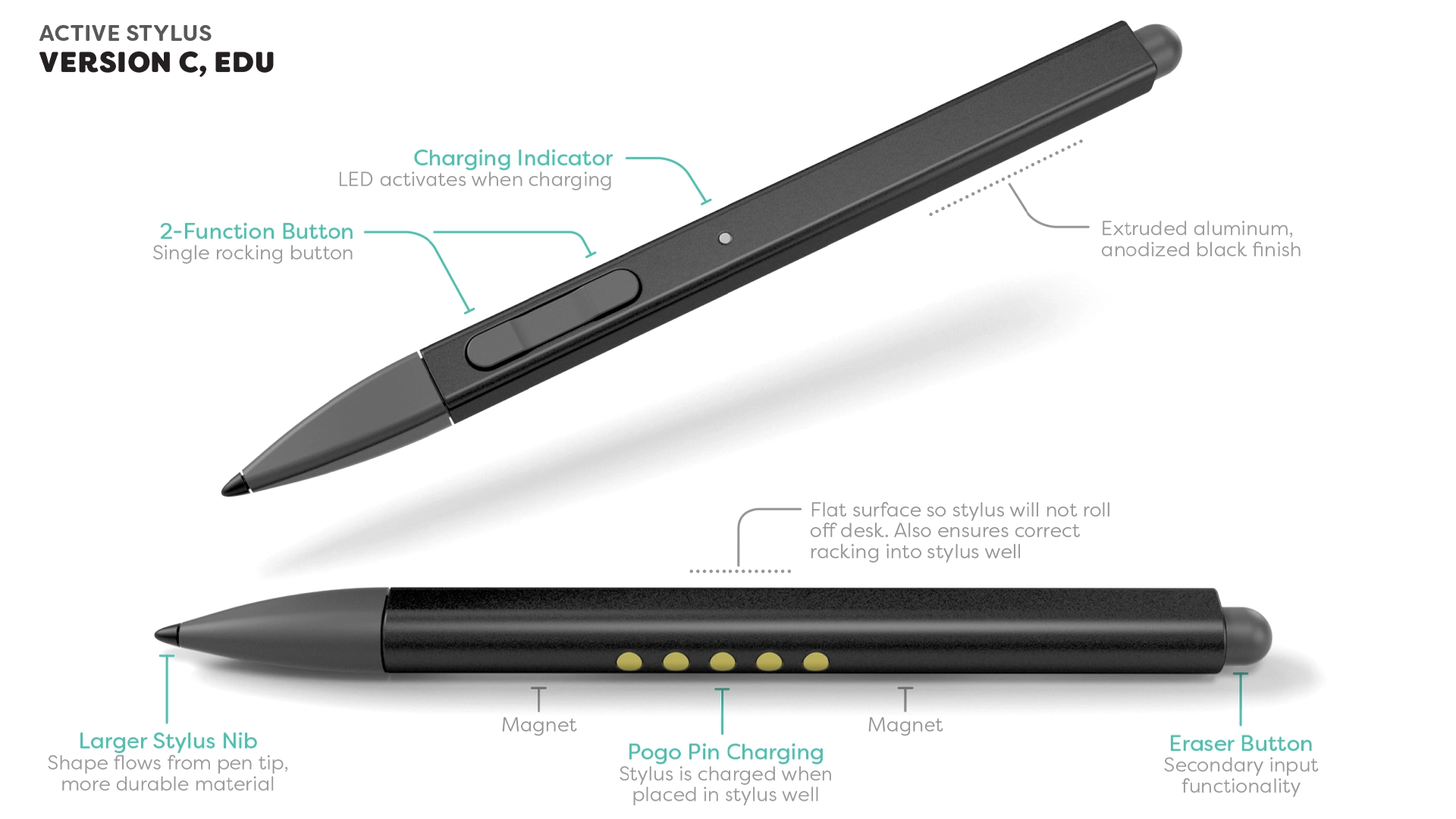
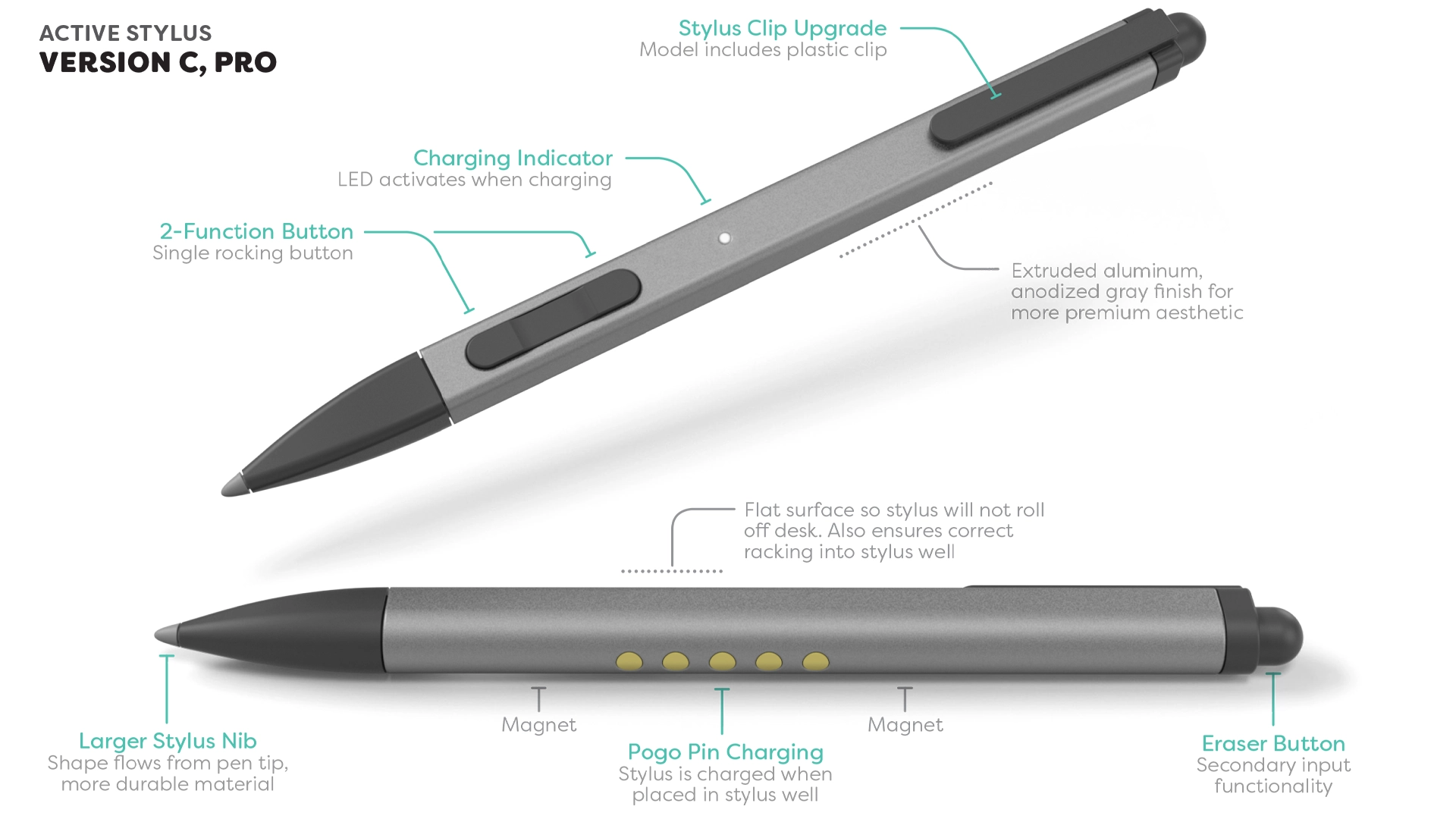
A lot of time went into perfecting the keyboard design. Full arrow keys and a lock button became central features. There was some internal competition between round keys or square keys. So I designed both versions. Below are some of the color variations we explored.
